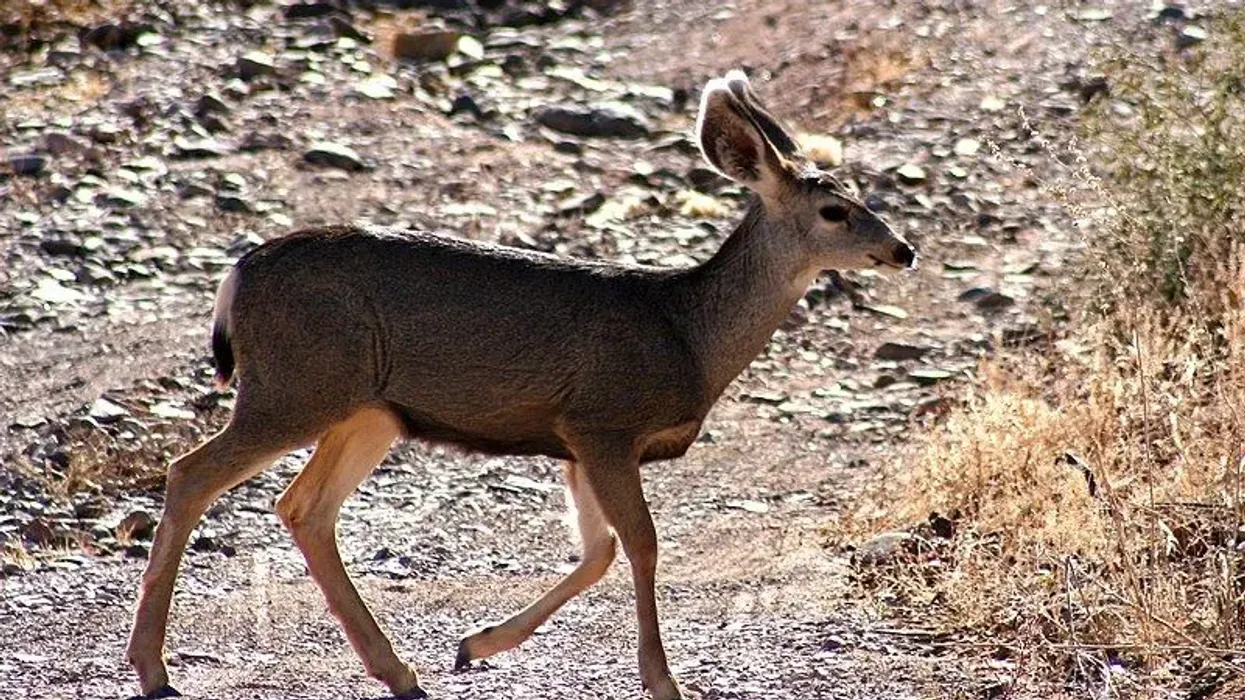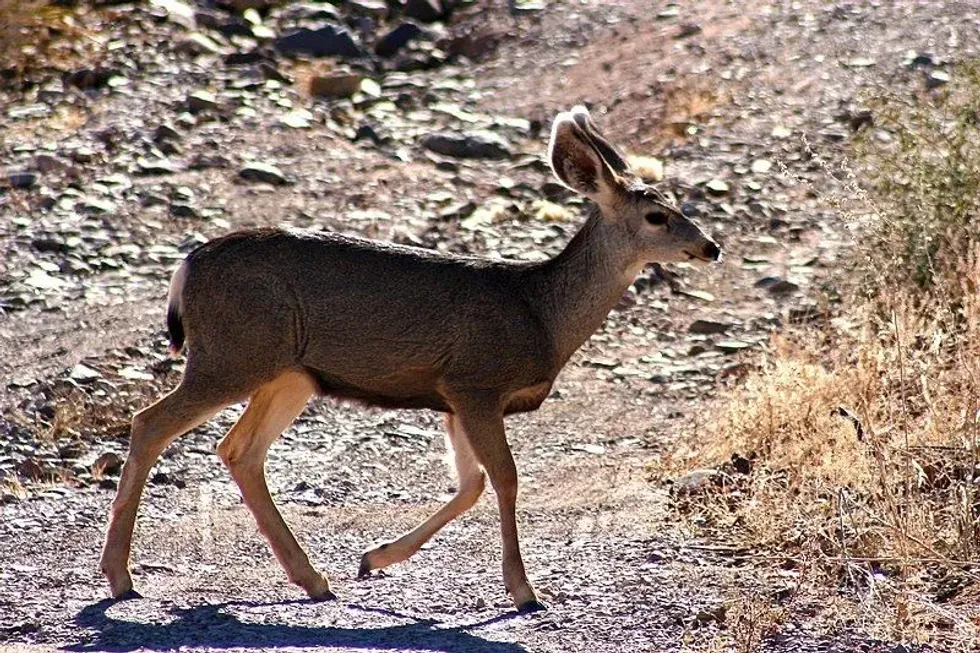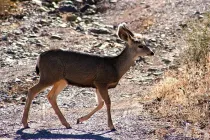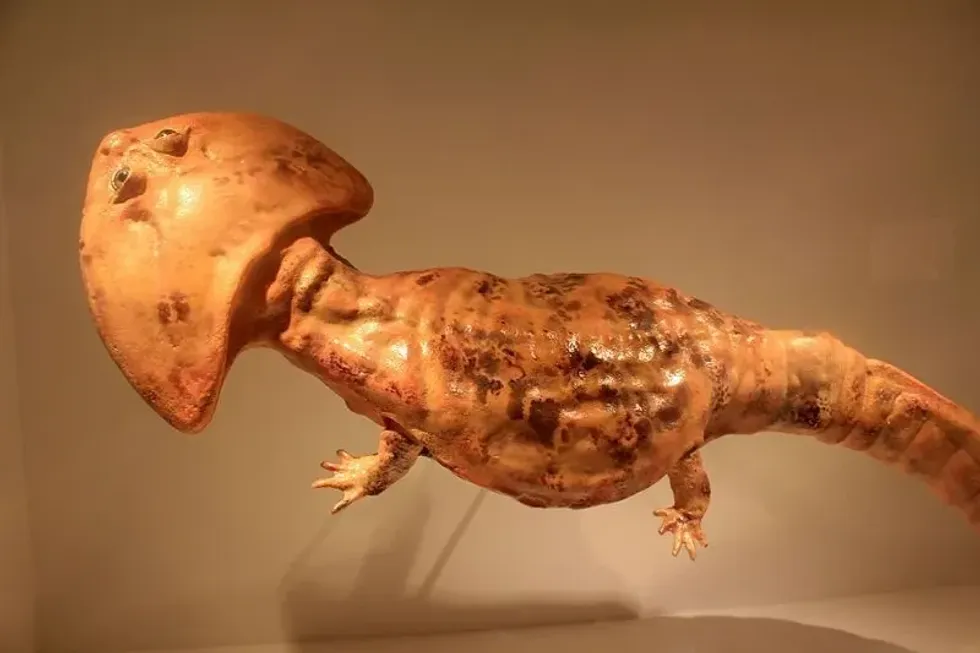Fun Odocoileus Facts For Kids
If you are on the search for the oldest deer in the world, then you might have to take a look at the Odocoileus group of deers that are thought to have emerged almost four million years ago. The name Odocoileus is thought to be a reference to the missing front teeth of deers in this genus.
The term 'Odocoileus stands for 'hollow tooth'. This group of deers is divided into two species: the white-tailed deer (Odocoileus virginianus) and the mule deer (Odocoileus hemionus).
The Odocoileus group of deers have a widespread distribution and have many subspecies. While as a whole group of deers, Odocoileus maybe not a worry for conservationists, there are certain subspecies that are on the brink of extinction.
So, keep on reading to know about the lifestyle and other aspects of the Odocoileus deers. For more relatable content, check out these deer facts and Scottish deerhound facts for kids.
Odocoileus Interesting Facts
What type of animal is an Odocoileus?
The Odocoileus is a genus of two species of deer from the continent of America. The two wild deer species are the mule deer and white-tailed deer. There were two other subspecies that have gone extinct. They are the Odocoileus salinae and the Odocoileus lucasi, which were commonly called the American mountain deer.
What class of animal does an Odocoileus belong to?
The Odocoileus deer belongs to the class of Mammalia or mammals and to the family Cervidae. The scientific name of the white-tailed deer is Odocoileus virginianus (meaning Odocoileus from Virginia) while the mule deer has the scientific name Odocoileus hemionus.
How many Odocoileus are there in the world?
While being spread across North and South America, the total number of Odocoileus deers has not been estimated. However, both the white-tailed deer and Odocoileus hemionus are in no danger of facing declines in their populations soon.
The populations of these two types of deers are considered to be the largest amongst mammals, with some even claiming that the US state of Texas has a white-tailed deer population that exceeds 4 million.
Where does an Odocoileus live?
The white-tailed deer (Odocoileus virginianus) and the mule deer (Odocoileus hemionus) are spread throughout the continent of America. The white-tailed deer has a more diverse distribution with it being found throughout North America and in the northern parts of the Southern American continent as far south as the countries of Bolivia and Peru.
The Odocoileus hemionus, on the other hand, is a wild deer that has a home range native to the North American continent like Canada, large parts of the central, southern, and western United States.
What is an Odocoileus habitat?
The habitat of the Odocoileus ranges widely to its diverse distribution. The white-tailed deer has a habitat range of usual forest animals.
Their main habitat in North America is made up of forest vegetation, however, they have also been spotted in prairies and savanna habitats. In Central America, the white-tailed deer prefers to live in tropical broadleaf forests that are generally dry along with deciduous forests and wetlands.
The South American white-tailed deer may be spotted in two types of habitat.
Their first habitat is in the high-altitude areas of the Andes in countries like Venezuela and Peru. The second South American habitat of the white-tailed deer is quite similar to the Central American habitat.
The mule deer or the Odocoileus hemionus has a habitat that ranges from forest areas, mountain ranges, savanna, grasslands, and more. The Odocoileus hemionus is believed to be able to adapt to around 60 different types of habitats and vegetation.
While the white-tailed deer also migrate, more pronounced migration patterns are found in the O. hemionus. During the winter months, these deers migrate from the high elevation summer lands to lower ranges so that they do not have to bear the brunt of the cold and harsh winter of North America.
Although the deers can survive the snow, you don't need to understand literature, science, or maths to realize that their supply of food and vegetation is severely hampered by the snowfall.
Both the mule and white-tailed deer are terrestrial and crepuscular animals that are usually active during the hours of twilight, or, in some cases, moonlit nights.
Who do Odocoileus live with?
The white-tailed deer is generally solitary in nature. The only time groups are formed is when females give birth to fawns in the spring. These fawns and the females stay together in groups for some time.
However, male fawns are known to leave the group soon after their birth. These males can then form their own groups of unrelated deers.
In the case of Odocoileus hemionus, these deers are more social than their whitetail counterparts. For example, even though the patterns of the group for Odocoileus hemionus don't change, many herds of these deers have been known to come together during the autumn. This is so that they are better prepared to be protected from the cold winter months.
How long does an Odocoileus live?
On average, the lifespan of the white-tailed deer can be within the age range of four to six years in the wild. However, in captivity, they have the ability to live for as long as 15-20 years of age.
Yet, wild does and bucks can be alive well past the age of 10 years. The average lifespan of the Odocoileus hemionus has an age range of 10-11 years, but again they can live for a much longer period when proper food and care are given to them.
How do they reproduce?
The breeding season of these mammals starts from the months of October and November and occurs for around three weeks. This breeding season or period is called the rut.
Females go into estrus during this time and release hormones and pheromones for the males to understand that the females are ready for breeding. The sexual maturity of the males and females varies with some fawns getting ready to mate within a period of six m0nths while other mature after 18 months.
During the rut, males often fight with other males using their antlers. Males with the bigger antlers are always the ones establishing dominance.
The copulation between male and female deers takes place through a copulatory jump. After the mating is completed, the female Odocoileus will have a gestation period that lasts around 200 days.
As a result of this, the birth of the fawns occurs in the springtime. The average litter size of a female is usually one to two fawns for both species.
Females are the ones looking after the fawns and they hide their fawns in vegetation as they search for food. Interestingly, the antlers of the male deers fall off in winter and then regrow again for the next rut or breeding season.
What is their conservation status?
Even the two types of Odocoileus deers have been classified in the status of Least Concern by the International Union for Conservation of Nature, there are certain subspecies that are endangered. The Florida Keys white-tailed deer 0r the Odocoileus virginianus clavium has the Endangered status.
In the case of Odocoileus hemionus, the Cedros Island subspecies of mule deers have only about 50 individuals left.
Odocoileus Fun Facts
What does the Odocoileus look like?
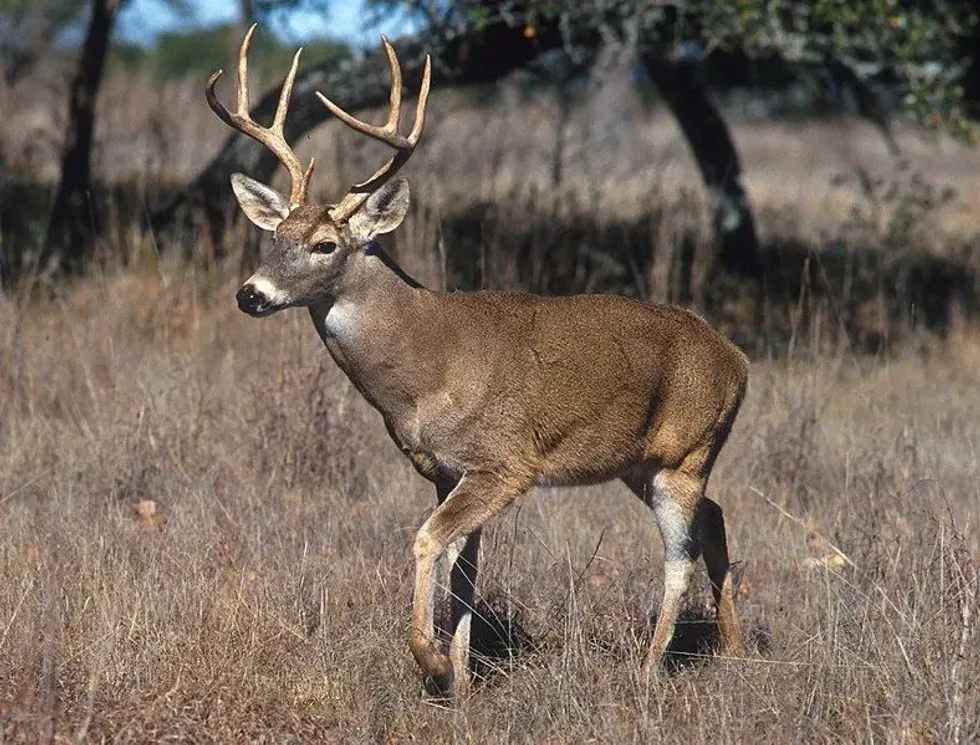
The two types of Odocoileus are quite similar with regard to physical attributes. Males are generally bigger than females in the case of both the mule and white-tailed deer.
The Mule deer has long ears like a mule and thus their name. These longer and bigger ears give them an acute sense of hearing. They have a slightly darker tipped tail.
There are two subspecies of the mule deers called black-tailed deers that have a dark, black tail. The white-tailed deer, on the other hand, has a white tail. While running away from predators and dangers, this moving white tail is used to warm other whitetail deers.
The antlers of the mule variants are forked while the white-tailed deer has antlers that branch out from one single beam. Both the mule and white-tailed deers lack front teeth and have a soft palate there.
The coloration of the fur varies depending on the habitational range that the Odocoileus stays in. Those living in colder climates have a lighter fur coloration like grey, while the warmer climate Odocoileus have reddish or brownish fur. This phenomenon of coat coloration changing also occurs for deers that are migrating from high elevation lands in winter.
How cute are they?
This group with its characteristic mule-like ears for Odocoileus hemionus and the white coloration on the tail of the white-tailed deer are extremely adorable and cute to look at.
How do they communicate?
Odocoileus deers communicate via auditory and chemical cues. They are known to have loud shrieks and calls that serve as a way to communicate with others.
The white-tailed deer is known to breathe heavily in the presence of predators like jaguars and coyotes. Odocoileus deers also communicate through the way of marking each with the four types of scent glands that they have. These scent glands release hormones and pheromones that are especially useful in the breeding season.
How big is an Odocoileus?
There is a slight difference in size between the two Odocoileus deer types. However, sexual dimorphism is noticed in populations of both the mule and whitetail deers.
The white-tail deer has a length of 3-7 ft (0.9-2.1 m) with a tail length that ranges from 3-14 in (7.62-35.56 cm). The whitetail deer also has a height range at the shoulders of 1.6-4 ft (0.48-1.2 m).
In contrast, the Odocoileus hemionus has a length between the range of 4-6 ft (1.2-1.8 m) with a 4-9 in (10.16-22.86 cm) tail.
The height of these deers stands at 2.5-3.5 ft (0.76-1.06 m). In comparison, the fallow deer has an average length and height that is slightly less than the Odocoileus.
How fast can an Odocoileus move?
Generally, the white-tailed deer has a running speed of around 48 mph (77.2 kph) which makes them one of the fastest deers. Odocoileus hemionus is also not far behind with a speed of 45 mph (72.4 kph). Both the group of deers shows stotting behavior, where all the four feet touch the ground at once.
How much does an Odocoileus weigh?
The Odocoileus has a weight range of 95-331 lb (44.9-150 kg) for the mule deers and 77-300 lb (34.9-136 kg) for the whitetail deers. Female deers are much smaller in weight than males, while the Florida Keys white-tail deer is amongst the lightest of the group.
What are the male and female names of the species?
The male name for Odocoileus is buck while the female name is doe.
What would you call a baby Odocoileus?
Baby or young Odocoileus deers go by the name of fawns.
What do they eat?
For this animal, diversity in regards to food is quite high. The white-tailed deer population is known to search for food during the twilight hours.
Their diet consists of plants, shoots, leaves, cacti seeds, acorns, corns, grasses, and other fruits. The Odocoileus hemionus deers have a food diet that may comprise of as many as 788 types of plants as per studies.
Are they poisonous?
No, of course not. These deers are not poisonous or venomous at all.
Would they make a good pet?
While the Odocoileus deers have had captive populations, they are best suited to their natural habitats. Thus, we wouldn't suggest keeping them as pets. Plus, you may catch a disease or two from them. A disease called Lyme disease is caused as a result of the deer tick.
Did you know...
In their search for food, the Odocoileus fall prey to a number of predators. These predators include animals such as the jaguar and coyote.
Where did Odocoileus originate?
The Odocoileus deers have their origins almost four million years ago where they emerged in southwestern parts of the North American continent.
Are they endangered?
While both the mule and short-tailed deer are considered to of Least Concern, there are certain subspecies like the key deer that are endangered or critically endangered.
Here at Kidadl, we have carefully created lots of interesting family-friendly animal facts for everyone to discover! Learn more about some other mammals from our reindeer facts and fallow deer facts pages.
You can even occupy yourself at home by coloring in one of our free printable odocoileus coloring pages.
We Want Your Photos!
More for You
See All
Bachelor of Arts specializing in Journalism and Mass Communication, Postgraduate Diploma in Sports Management

Moumita DuttaBachelor of Arts specializing in Journalism and Mass Communication, Postgraduate Diploma in Sports Management
A content writer and editor with a passion for sports, Moumita has honed her skills in producing compelling match reports and stories about sporting heroes. She holds a degree in Journalism and Mass Communication from the Indian Institute of Social Welfare and Business Management, Calcutta University, alongside a postgraduate diploma in Sports Management.
Disclaimer
1) Kidadl is independent and to make our service free to you the reader we are supported by advertising. We hope you love our recommendations for products and services! What we suggest is selected independently by the Kidadl team. If you purchase using the Buy Now button we may earn a small commission. This does not influence our choices. Prices are correct and items are available at the time the article was published but we cannot guarantee that on the time of reading. Please note that Kidadl is a participant in the Amazon Services LLC Associates Program, an affiliate advertising program designed to provide a means for sites to earn advertising fees by advertising and linking to Amazon. We also link to other websites, but are not responsible for their content.
2) At Kidadl, we strive to recommend the very best activities and events. We will always aim to give you accurate information at the date of publication - however, information does change, so it’s important you do your own research, double-check and make the decision that is right for your family. We recognise that not all activities and ideas are appropriate for all children and families or in all circumstances. Our recommended activities are based on age but these are a guide. We recommend that these ideas are used as inspiration, that ideas are undertaken with appropriate adult supervision, and that each adult uses their own discretion and knowledge of their children to consider the safety and suitability. Kidadl cannot accept liability for the execution of these ideas, and parental supervision is advised at all times, as safety is paramount. Anyone using the information provided by Kidadl does so at their own risk and we can not accept liability if things go wrong.
3) Because we are an educational resource, we have quotes and facts about a range of historical and modern figures. We do not endorse the actions of or rhetoric of all the people included in these collections, but we think they are important for growing minds to learn about under the guidance of parents or guardians.
